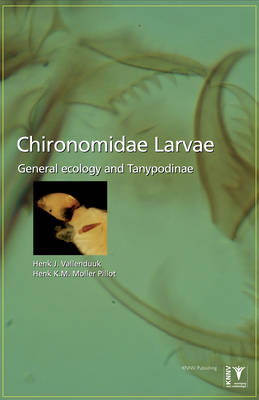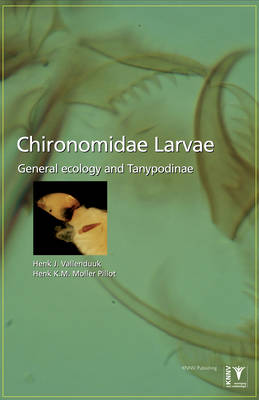
- Afhalen na 1 uur in een winkel met voorraad
- Gratis thuislevering in België vanaf € 30
- Ruim aanbod met 7 miljoen producten
- Afhalen na 1 uur in een winkel met voorraad
- Gratis thuislevering in België vanaf € 30
- Ruim aanbod met 7 miljoen producten
Zoeken


Chironomidae Larvae, Vol. 1: Tanypodinae
General Ecology and Tanypodinae
Henk J Vallenduuk, Henk K M Moller Pillot
Hardcover | Engels
€ 82,95
+ 165 punten
Omschrijving
General ecology of the Chironomids and identification key to the Tanypodinae
To most people midges are a nuisance--annoying creatures that can spoil a quiet evening. However, there are those who study these tiny insects with great passion, including the two authors of this book.
Because the European Water Framework Directive requires the authorities to ascertain the presence status of macro-invertebrates in surface waters, their work gained more attention.
Chironomids are a group of non-biting midges, the larvae of which are important in aquatic ecosystems. A major subfamily of this group are the Tanypodinae. The larvae of most of the species are free-swimming or crawling predators while those of other species burrow in the mud on the bottom. Since they inhabit a variety of habitats they can be found in almost all surface waters in the Netherlands.
The authors revised existing identification keys and collected additional information on the biology and ecology of the larvae. Where possible, the identification keys use anatomical characters that are easily observed.
The clear descriptions of the development stages, sampling methods and abiotic environmental factors help make this book useful for all students of chironomid larvae, professional or otherwise. This book is especially important for its potential use in water quality management.
Volume 1: Chironomidae Larvae - General ecology and Tanypodinae
Volume 2: Chironomidae Larvae - Biology and ecology of the Chironomini
Volume 3: Chironomidae Larvae - Biology and Ecology of the Aquatic Orthocladiinae
To most people midges are a nuisance--annoying creatures that can spoil a quiet evening. However, there are those who study these tiny insects with great passion, including the two authors of this book.
Because the European Water Framework Directive requires the authorities to ascertain the presence status of macro-invertebrates in surface waters, their work gained more attention.
Chironomids are a group of non-biting midges, the larvae of which are important in aquatic ecosystems. A major subfamily of this group are the Tanypodinae. The larvae of most of the species are free-swimming or crawling predators while those of other species burrow in the mud on the bottom. Since they inhabit a variety of habitats they can be found in almost all surface waters in the Netherlands.
The authors revised existing identification keys and collected additional information on the biology and ecology of the larvae. Where possible, the identification keys use anatomical characters that are easily observed.
The clear descriptions of the development stages, sampling methods and abiotic environmental factors help make this book useful for all students of chironomid larvae, professional or otherwise. This book is especially important for its potential use in water quality management.
Volume 1: Chironomidae Larvae - General ecology and Tanypodinae
Volume 2: Chironomidae Larvae - Biology and ecology of the Chironomini
Volume 3: Chironomidae Larvae - Biology and Ecology of the Aquatic Orthocladiinae
Specificaties
Betrokkenen
- Auteur(s):
- Uitgeverij:
Inhoud
- Aantal bladzijden:
- 144
- Taal:
- Engels
Eigenschappen
- Productcode (EAN):
- 9789050112598
- Verschijningsdatum:
- 1/01/2007
- Uitvoering:
- Hardcover
- Formaat:
- Genaaid
- Afmetingen:
- 155 mm x 236 mm
- Gewicht:
- 340 g

Alleen bij Standaard Boekhandel
+ 165 punten op je klantenkaart van Standaard Boekhandel
Beoordelingen
We publiceren alleen reviews die voldoen aan de voorwaarden voor reviews. Bekijk onze voorwaarden voor reviews.












